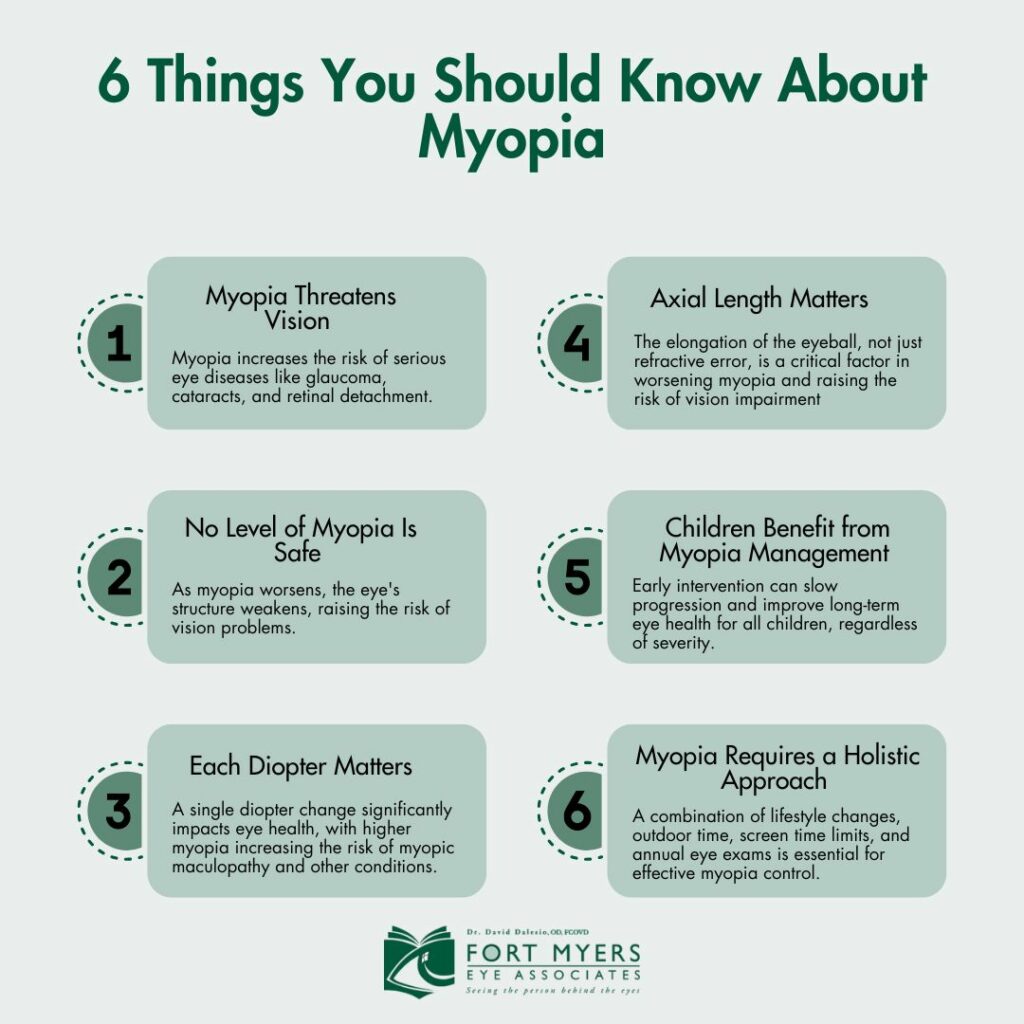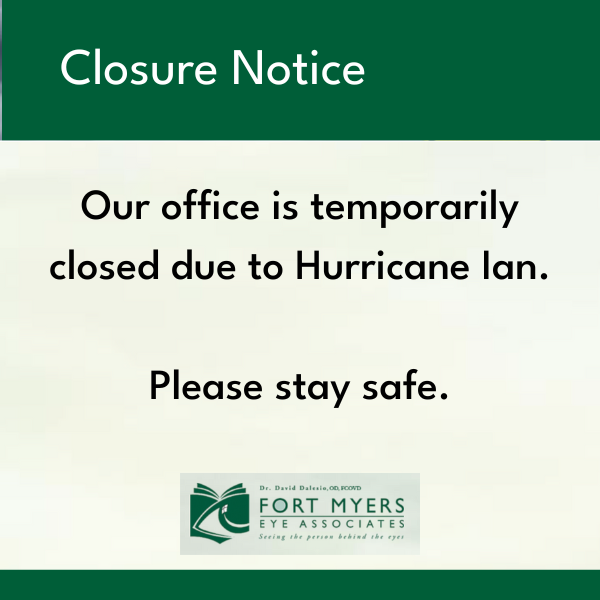Myopia is becoming increasingly common in our ever-growing digital and hyper-productive age.
Although wearing glasses or contact lenses often feels like a quick fix, there’s much more to know about how this otherwise common eye condition affects our vision and eye health:
- Myopia threatens vision
- No level of myopia is safe
- Each diopter matters
- Axial length also matters
- All children benefit from myopia management
- Managing myopia requires a holistic approach
Shedding light on myopia’s impact isn’t an attempt to incite fear, but to highlight the necessity of proactive vision care, especially for children, whose eyes are still growing. Even minor improvements through myopia control therapies can positively affect vision later in life.
Myopia Threatens Vision
Myopia isn’t just about needing stronger glasses. It can also potentially harm your vision in the long-term.
In today’s world, children are spending more time indoors using digital screens and less time playing outside. This combination limits exposure to natural outdoor light and promotes excessive close-up focus, straining eye muscles and worsening vision over time.
The risks of leaving myopia unchecked extends beyond blurry vision. Worsening myopia significantly increases the risk of developing serious eye conditions later in life, such as:
- Glaucoma
- Cataracts
- Myopic maculopathy
- Retinal detachment or tears
Although there’s no cure or way to reverse myopia, we manage its progression in children by using a combination of control therapies and lifestyle changes to preserve eye health:
- Low-dose atropine drops: Applied once nightly, these medicated eye drops relax the eye’s focusing mechanism.
- Orthokeratology lenses: These specialized contact lenses are worn overnight to gently reshape the cornea and offer clear vision during the day without the support of corrective lenses.
- MiSight daily disposable contacts: These lenses include unique treatment zones to slow myopia progression while correcting vision.
For adults, we address myopia by correcting their vision with glasses or contact lenses.
No Level of Myopia is Safe
You might think a mild case of myopia is nothing to worry about. However, research shows there is no such thing as a “safe” level of myopia.
With every stage of increased myopia, the eye undergoes physical changes, further stressing its structure, and increasing the likelihood of vision-related concerns down the line.
Previously, only high myopia—classified as -6.00 diopters or greater—was considered a significant risk to eye health. Now we know that any level of myopia can increase the risk of complications.
Each Diopter Matters. . .
A diopter measures the unit of a refractive error. It tells us how much correction your eyes need to focus clearly. While this number may seem small, even just one diopter can make a huge difference in your eye health.
For example, every one-diopter increase in myopia is associated with a 67% higher risk of developing myopic maculopathy, a condition that damages the macula, a structure within the retina responsible for sharp central vision.
On the flip side, slowing myopia by one diopter can reduce that risk by up to 40%.
. . . And So Does Axial Length
Myopia is more than just blurry vision. Structurally, myopia results from axial elongation of the eye or too much curvature of the cornea.
Axial elongation means that the eye becomes longer than normal, causing incoming light to focus in front of the retina (instead of directly on it), which is why distance vision becomes blurrier as the eye myopia progresses.
Axial elongation is a key factor in raising the risk of developing serious eye conditions. Research shows that people with extreme axial elongation are at a significantly higher risk of visual impairments. That’s why the focus of myopia control should be on reducing axial length instead of solely on counteracting refractive error.
Fortunately, myopia control therapies already address this concern. A majority of these approaches work by manipulating how light enters the eye in order to limit axial elongation.

All Children Benefit from Myopia Management
If your child has myopia, don’t wait to see how it progresses before seeking treatment. No matter the severity of the condition, early intervention can benefit all children.
The earlier myopia treatments begin, the better the results. Ideally, therapies should begin once myopia is diagnosed, which is usually in childhood between ages 6 to 12. During this time, children’s eyes are still growing and developing, making them more responsive to treatment.
Delaying treatment or focusing exclusively on children with rapidly progressing myopia means those with mild myopia miss out on the benefits these treatments offer.
Myopia therapies are safe and effective. Every child deserves the best possible chance for lifelong eye health.
Adopt a Holistic Approach to Myopia Management
Managing myopia effectively isn’t just about advanced therapies; it’s also about adopting healthy lifestyle changes.
Adopting a holistic approach can significantly improve visual outcomes and slow progression:
- Promote visual hygiene: Teach children to follow the 20-20-20 rule to reduce eye strain and exercise eye muscles. Look at something 20 feet away for 20 seconds after 20 minutes of near work.
- Encourage time outdoors: Studies show that spending at least 2 hours a day outdoors helps slow the progression of myopia.
- Limit screen time: Encourage children to not spend more than 3 hours a day (outside of school) on close-up activities like reading, homework, or digital screens.
- Follow WHO recommendations: The WHO suggests specific time limits for screen use in children under 5 and emphasizes the importance of outdoor play for healthy vision.
- Annual eye exams: Early detection is key for effective myopia management. Annual exams are encouraged for children because of the developmental changes in their eyes and vision. Regular exams help monitor these changes for timely intervention.

Take Action Early
The gradual rise in myopia shouldn’t be taken lightly. With a holistic approach, we can manage myopia progression and safeguard our children’s sight for years to come.
Connect with our Fort Myers Eye Associates team to schedule a consultation for myopia control.





